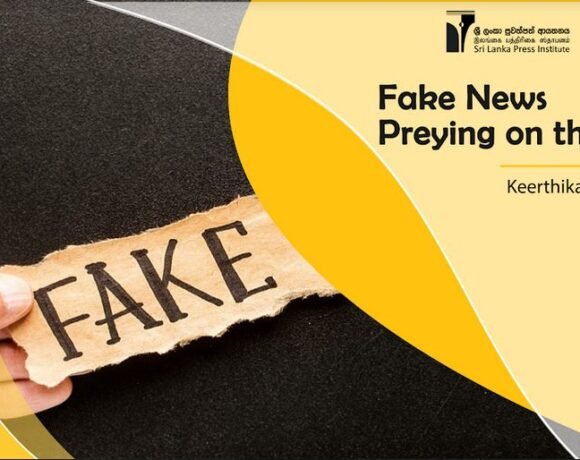
The use of Hate Speech in Social Media and its Challenges
Written by – I. K. Prabha
There is a popular saying that “the democratic right of any individual should end in the nose of the other”. Furthermore, the intellectual levels that exist between individuals and groups of individuals vary accordingly when dealing with society. It doesn’t matter if you cannot appreciate another person’s progress and praise him/her or be happy, but you should always keep in mind that you have no right to insult at a person. Hate speech is a long-running topic being discussed. Its contents can be identified when individuals or groups of individuals are discriminated against on the basis of race, religion, language, complexion, religious beliefs, gender, sexual orientation, political beliefs, social status, financial stability, age, mental health and any traumatic background.
(https.//dictionary.cambridge.org/us/dictionary/English/hate-speech)
There are several unique facts and instances which reveal that hate speech has been created in various ways throughout Sri Lankan history. There has also been a change in the way of using communication strategies from time to time. The religious ideologies of Anagarika Dharmapala, who is known as the father of the Buddhist Revivalism Movement in Sri Lanka since the 20th century, have affected the lives of Tamils and Muslims. It is not a secret that the verbal expressions he used in small group meetings were sometimes hateful.
(https://theconversation.com/violent-buddhist-extremists-are-targeting-muslims-in-sri-lanka-92951)
Hate speeches made by mainstream media outlets, like newspapers, radio and television in the post-war period since 2009, have had a profound effect on intercultural co-existence and the formation of political views and also helped nurture the general public’s opinions. As a result of globalization, the Muslim community were exposed to direct impacts from various communities including other Sri Lankans. There, we can identify how social media is targeted, especially through new technology, and how it uses social media spaces subtly using entertaining and creative approaches.
“Hate speech that was prevalent in the early days due to racial and religious turbulence, is now being spread on social media without any politeness, with false and distorted information targeting politicians and political parties. Educated, ignorant and radical ideologues try to present their views in a malicious manner on social media, which also creates unnecessary temptations for social existence. Therefore, hate speech is rampant on social media nowadays”, said Dr Mapa Thilakaratne, a retired professor in the Department of Mass Communication at the University of Kelaniya.
“Presently, some people in Sri Lankan society create fake news with the message ‘Anichchavatha Sankara’, meaning May you attain the supreme bliss of Nibbana’, especially directed at actors and actresses who are still alive. The thoughts and behaviour of the people are so low as to spread such false rumours and it has been caused by the freedom of expression provided in across social media platforms which have led to the arbitrary use of social media”, Dr Thilakaratne explained. While he was attending a three-day SAARC summit in Calcutta, India, at the end of the conference the Indians who were also attending the session have asked the participants to not to release any photos of the conference on social media and that doing so would be a second-rate act. He also said that “although the concept of ‘hot news’ was developed by the media in the past, it is now regulated in many western countries, and social media is now a carrier of hate speech as people are tempted to present fake information under the guise of hot news”.
It is a new trend to publish information or messages in a way that is blasphemous or insulting to an individual or a group of people through any kind of fake information created via the internet using technological means of communication. It is called ‘Cyber Hate’. For that, social media platforms such as,
- Internet
- Websites
- Social Network Sites
- Web 2.0 Vector
- Dating Sites
- Blogs
- Internet Gaming
- Imo
- YouTube, are being consumed.
Although the above media platforms are infinitely widespread, it is possible to identify how news contents which include peace and reconciliation messages are spread in a very limited cyber atmosphere. The number of users in such social media spaces is also limited. However, in order to control fake information and hate speech. and to minimize the potential impact of such activities on society, social media platforms have introduced community-based standards regarding privacy and other issues. Due to the fact that it is only a nominal situation, these institutions are currently developing technological methods to monitor hate speech and take necessary action. That is why some social media accounts, which give priority to fake news and hate speech are abruptly being shut down. Legal provisions have been introduced in many parts of the world to protect freedom of expression and take action in such situations, as well as for the protection of citizens.
The hate speech spread by some organized groups via social media is mainly targeted at the youth and they get together as groups and circulate the hate speech contents regardless of its content. As they use pictures or passwords secretly and strategically targeting a very limited number of people, it is difficult to uncover the true identity of those who create and distribute fake news stories. It is particularly noteworthy that it promotes issues of security and public opinion and can affect emotions and even the economy. Furthermore, self-censorship within oneself will inevitably lead to social progress if one acts in a way that protects one’s dignity and the self-esteem of others in the social media atmosphere. Another way to overcome the current situation is for those who advocate for good social media usage to use that space in an organized manner.






